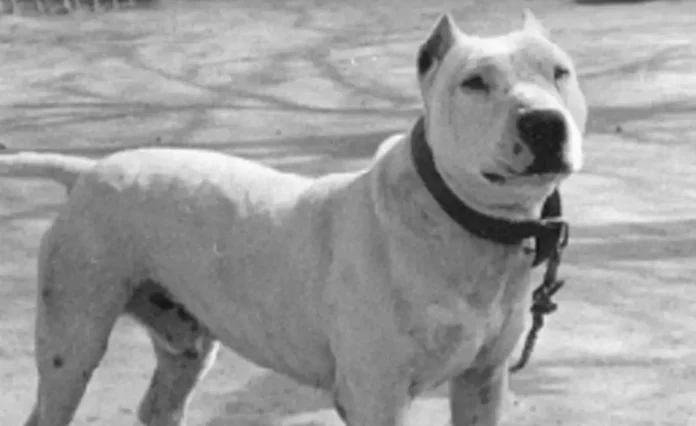Let’s investigate and learn about the intriguing periods in which these historical breeds lived before they went extinct. Extinct dog breeds have a proper history of their coming into existence. Similarly, these cherished canines certainly have a unique story of extinction. These dog breeds have disappeared for a variety of reasons, most notably people aren’t interested in them. Unfortunately, some breeds of dogs have to pass through the disease to natural evolution, and people no longer find these dogs fashionable. You can find more information on the fate of extinct dog breeds and the preservation of contemporary pedigrees in this writing. However, here are some breeds that are out of sight and are no longer around.
The Cordoba Fighting Dog
A formidable breed from Argentina, Cordoba Fighting Dog, was known for its hefty fighting skills and aggression. This dog gave it great importance because of the powerful physique, cruel combat style and strength. However, because of their intense nature, they were eventually phased out through cross breeding with less aggressive breeds, which caused their decline and final extinction. Then in 1945, when the Argentina government emphasized the practice of fighting the dog, the dog rejected the Cordoba or Pero de Pelia Cordobes. Therefore, this battle dog leads to almost extinct dog breeds, which is nowhere near us.
Brazilian Tracker
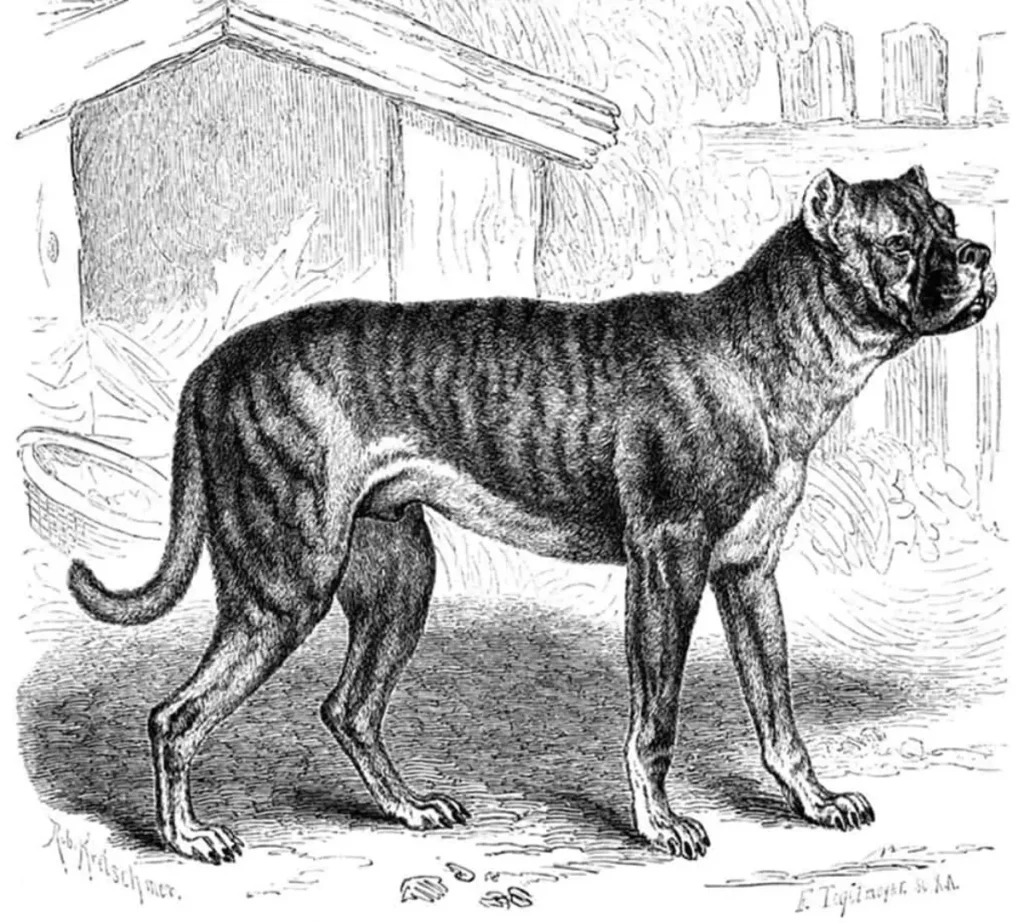
This extinct dog breed, also known as the mastered Bracilliro, officially came in 1967 in the documents of Kennel Club in Brazil. After being recognized, he was eradicated after only six years. The breed faces a disease that outbreaks in a Brazilian tracker and uses excessive pesticides for their salvation. Excessive use of pesticides had a significant impact on the breed population. The Brazilian tracker dog, who was previously a popular hunting race in Brazil, was known for its remarkable trekking skills and nature, which was the same for the American Konhound. Despite the disappearance, recent efforts have been made to revive the breed through the breeding of conservation, to restore its specific properties and contributions to the cornering history.
Alpine Mastiff breeds an extinct dog
One of the first examples of extinct dog breeds is a dangerous alpine mastiff, which originates in Northern Europe in 500 BC. These giant dogs were delivered to their luxurious shape, measure more than 39 inches on the shoulder and weigh more than 350 pounds, and were probably ancestors of English mastiff. They were perfect for the mountainous region because of its size and power. Then over time they crossed with other mollosar variants and were eradicated in their pure form in the 19th century. However, they are no longer with us, their history lives in modern St. Bernard and English mastiff breeds, which share many physical properties and properties of alpine mastiff.
The Tahltan Bear Dog
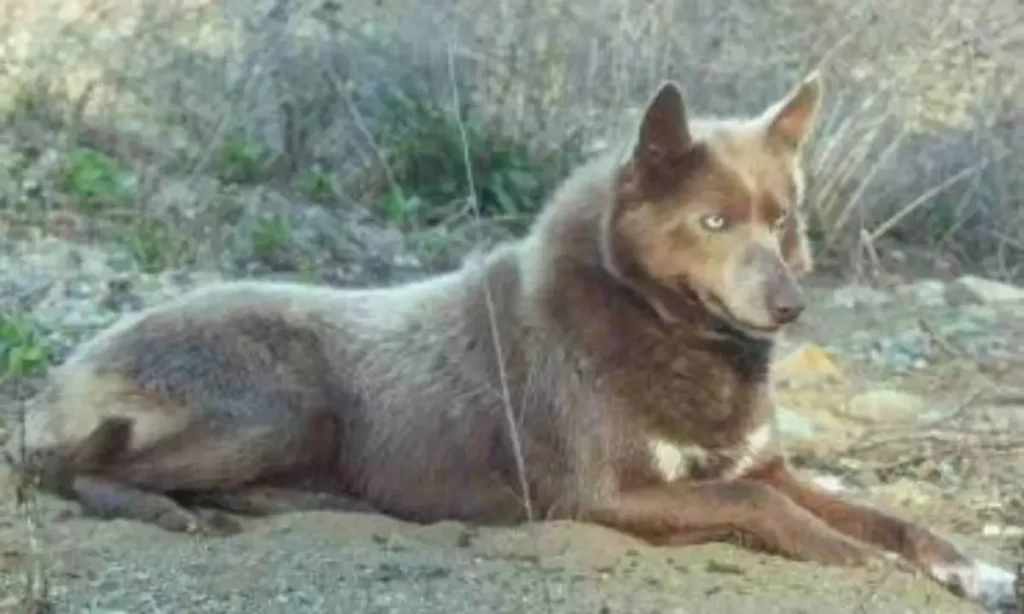
The Tehletan bear dog is something a mysterious breed that originates in British Columbia. Tahlton were breeders and keepers of this small breed of the Spitz type, who forbade the bear. However, breeds decreased in the early 1900s when traditional hunting practice began to subside. Factors that contribute to its extinction include the introduction of other dog breeds that were preferred for hunting, and possibly loss of interest in maintaining the breed. Europeans cross this breed with a variety of dog breeds, resulting in a thin breed that was no longer feasible.
Talbot Hound
Talbot Hound was a sought -after hunting dog from Normandy, which was known for its unusual form and hunting skills. Talbot, with its curly tail, athletic frame and iMaculat White Coat, was a very loving companion and hunter in England. However, as more specific breeds appear and Talbot’s care requirements increased, the breed decreased. At the end of the eighteenth century, it was eradicated with the existence of modern breeds. The legacy of Talbot remains in his child, especially Beagle and Bloodhound, which inherits many sweet properties for the ancestral.
Norfolk Spaniel
Another extinct breed was Norfolk Spaniel who jumped into England during the 19th century. This breed in particular became the breed with flushing games and bird hunting skills in recovering. However, it lost today despite its hunting skills and lost with the introduction of other breeds that were better suited to develop hunting styles. In addition, he was paired with other Spaniel breeds in the 1900s, which caused the breed to eradicate. But over time, human taste can be eradicated to some breeds.
The Dogo Cubano
It was the heaviest breed, a large breed from Cuba, was valuable to versatility in its impressive status and work roles. When grown, it weighs up to 300 pounds and has a strong jaw and a small coat corresponding to its tropical environment. It had a small muzzle, wide neck and heads, and the eyes were awake, but an aggressive pet against other animals. Dogo Cubano faces challenges, including changes in cornering preferences and the introduction of another breed that caused its extinction in the 19th century.
St. John’s Water Dog
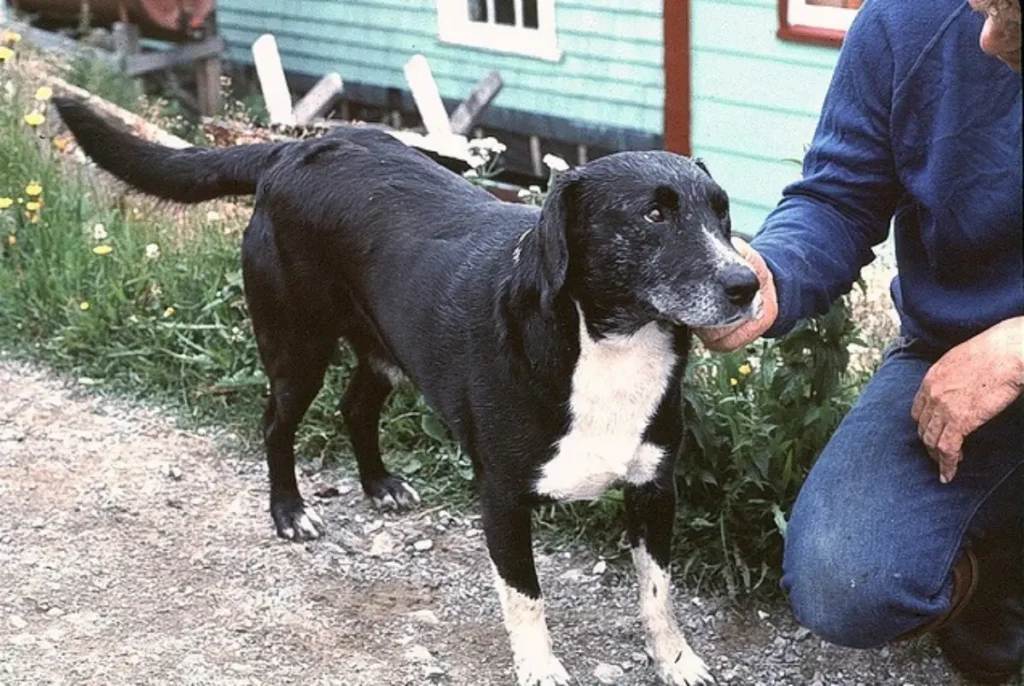
St. John Water Dog was a rare breed and was known for the swimming ability and tight ties with fishermen. These water -raised dogs developed in Newfoundland were dedicated companions to their human colleagues and were fluffy in aquatic environment. After being brought to England in the 1900s, St. John’s Water Dogs interacted with other breeds. Unfortunately, this mixture resulted in a decline in the number, and the breed was tragically extinct of dogs in the 1980s. Their influence can be seen in symptoms of modern breeds such as Labrador Retriever and Golden Retriever, even if they disappeared.
Brack you puya
There are no remarkable and vivid examples of the French breed known as Brack du Puya. Hunting skills, especially indicating the game and recovering, make it a predator. There is no accurate principle of its existence, but they were protected from extinction during the French Revolution. The breed disappeared later in the early 1900s, when it failed to endure difficulties in securing this, despite this possible defense. The breed known for being used as a sports dog has ended with the extinct.
Molossus
The breed known as Molosus popped from the Kingdom of Molosia in Italy and was very honored for its extraordinary power and hunting skills by the old Greeks and Romans. This mighty dog was given ancient significance for their violence, but also protected the Roman army. However, it is still unknown when they were extinct, Molosus had a major impact on the development of several modern mastiff rases, such as St. Bernard, Great Dane and Burnis Mountain Dog. These breeds are a living example of historical significance in the Armed Forces, the war and the pursuit of their descendants and Moolosus.
Hawaiian Poi Dog
Hawaiian Poi Dog is a small corner that was possibly brought to the Hawaii island of Polynesian. These dogs had tremendous significance as food sources because animal protein was in low supply on islands. He took his name from Poi, a Taroplante who was fed to this breed. In the early 1800s, the time was due to the extinction of the Hawaiian Poi corner tooth mainly mutually mutual action with other imported corner tooth rases. In the 1970s, an attempt was made to revive a rare Polynesian breed through breeding programs, reflecting the ongoing concern of preserving its unique history.
Salish Wool dog
The salic wool dog was a sweet long -haired breed with thick, wool fur and a striking ice white coat, which was highly valued by the Salaian people on the coast of British Columbia. To maintain their specific properties, these dogs like these Spitz were kept separate from other village corner. Salish people who were known for their weapons, cut off these dogs and made the fibers a formal blanket. However, the demand for Salish Wool Dog decreases with the introduction of Hudson Bay Trade blanket, more fair sheep wool, and decreases with wide colonial effects. Salish Wool Dog, recognized by the Canadian Canelle Club as a separate breed in the 1940s, which was traded in the 1990s, disappeared, ended a breed that was essential for the cultural customs.
Teas
An old Rasetesem was precious for its excellent hunting properties and unwavering devotion. This medium size eighth part of Egypt painted in the artwork on the walls of temples and graves. These corners were strong hunters and loyal companions with their long, thin body and triangular ear. Despite their popularity, Tesem finally lost the benefit and oppressed by other breeds, about 1650 BC, they were extinct. Two modern relatives, Slophie and Saluki, continue the descent of this beautiful breed.
Argentine polar dog
The breed became known by Argentina’s army as a “polar dog”, which was named after her long, thick strokes, strong frames and extraordinary endurance while eating in Antarctica. These rabbits were important for exploration and scientific missions, as they were a breed to survive in severe Antarctic and sub-anarchtic climate. But all dogs were separated from the continent after the Antarctic Treaty
The Alaunt
Strong and adaptable beef was a historical dog’s, which was common throughout Europe and Central Asia and was acquired by sarmatical nomads. These large, strong dogs, whose structures were very respected for their impressive physical strength and skill, were highly respected. The striking body and strong height were used in different types of tasks such as protection and hunting. However, the supernatural gradually disappeared and disappeared in the 1600s, despite their significance in antiquity. Therefore, their legacy has lives through historical records and successful breeds have inherited the forces and properties.
Chien-pig
Another name for Chein-pig is French Greyhound, known for his cheerful and loving personality. The extraordinary trekking capacity and agility once were on the basis of the victim of the medieval France. In the 19th century, this breed was extinct as hunting practice developed and other breeds gained popularity. Therefore, Chenn-pig canine is a remarkable part of history and symbolizes reputation in medieval Europe.
The Russian Tracker
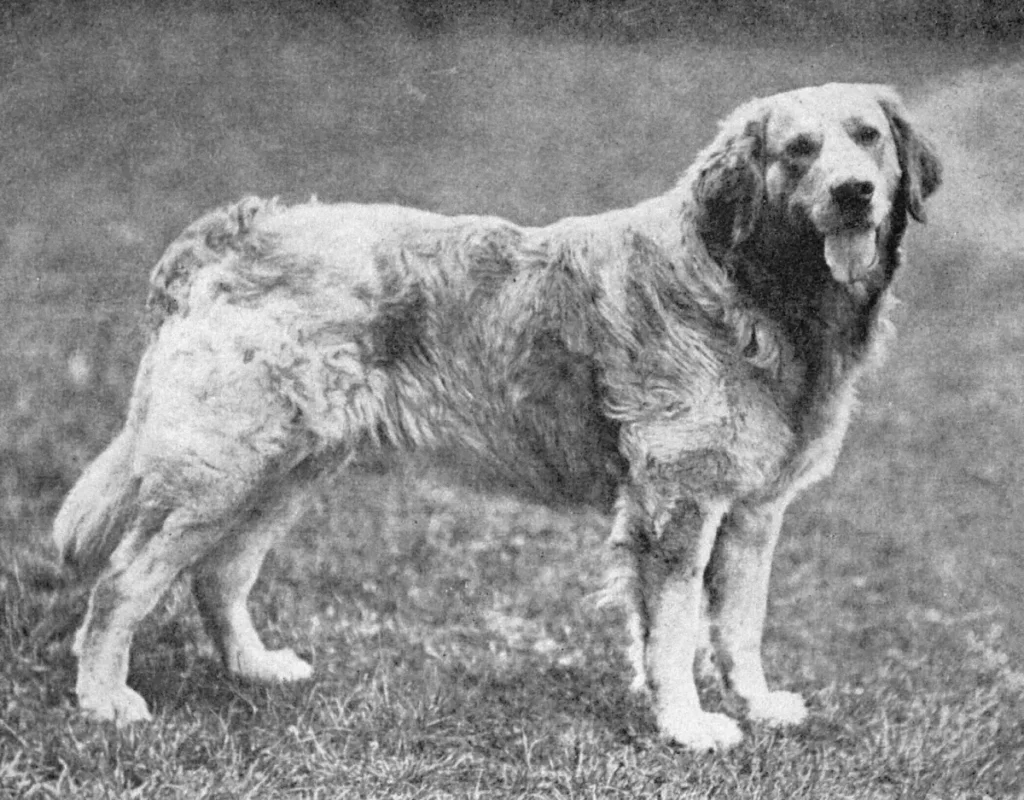
Russian trackers have extraordinary skills in trekking and hunting, also known as Russian hunting dogs or Russian tracking dogs. The hunter used this rare breed in the 1800s, to track and hunt for big sports such as deer, wild boar and bear. The Russian tracker developed in Russia gradually changed the technique of hunting and other breeds developed maximum work -specific expertise. Although this breed was not relatively extinct, it is also quite rare in Russia. In addition, they have not received widespread recognition beyond their origin with a deep sense of smell, endurance and agility.
Ruri dog
The Kuri dog was one of the small and oldest breeds present in New Zealand. This extinct dog breed was an integral part of the Maori tribes during the 1200s AD. According to the Maori myth, Mau’s brother -in -law first became a dog. Therefore, the breed of this extinct dog was considered a symbol of cultural significance. In the 19th century, the curi dog reduced due to the beginning of new breeds and the gap to European dogs. However, it can help in warm and loyal partner hunting. In addition, this breed was remembered as an indigenous heritage from New Zealand and respects its roleMāori culture.
FAQ’S
What is the reason why dogs are extinct?
In general, there are many causes of the dog’s extinction, such as effective treatment with an outbreak of the disease and the changed human priorities of the breed are the cause of their extinction. However, environmental changes and housing resolution also contribute to their downfall.
When was the turnpith round extinct?
Turnpit Dog, a breed, which is known for its specific function in the kitchen in the 19th century, was extinct in the 1800s. The dogs disappeared suddenly, dismissed as pets and were no longer helpful as employees of the kitchen.


